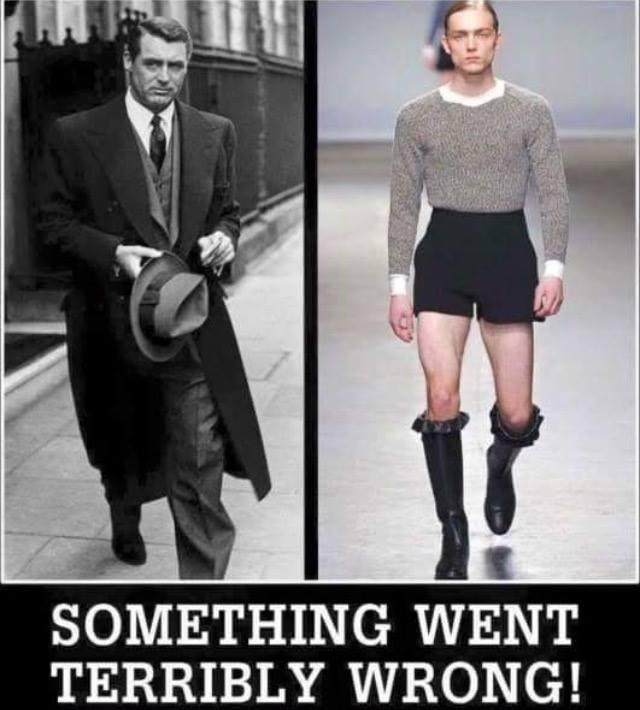Mens fashion has undergone major shifts and changes over the past century. From classic suits in the 1920s and 1950s to hippie styles in the 1960s and punk rock looks in the 1970s, menswear has constantly evolved with the times.
Today, mens fashion is more complex and varied than ever before. The rise of “athleisure,” streetwear, and gender-fluid clothing has introduced new trends and given men more flexibility in how they dress. At the same time, tailoring and traditional menswear has made a comeback among younger generations.
The Death and Return of Tailoring
For decades, formal tailoring dominated mens fashion. Suits and ties were standard business attire and a mark of sophistication. However, the 1960s and 70s saw a major backlash against formality and structure with more casual, laidback styles becoming mainstream.
By the 1990s and 2000s, suits were seen as stuffy and old-fashioned by young men. Fashion became more about t-shirts, jeans, and sneakers. However, in the 2010s, we’ve seen a revival of classic tailoring. Designers have reimagined suits and formalwear to feel fresh and contemporary while millennials and Gen Z embrace custom, well-fitting suits.
The Rise of Streetwear and Sneakers
While tailoring declined, streetwear and sneakers became the dominant force in mens fashion. Brands like Supreme and Stussy embodied a loose, urban aesthetic centered around t-shirts, hoodies, bomber jackets and sneakers. Sneaker culture also exploded from being niche to a multi-billion dollar industry led by brands like Nike, Adidas and Jordan.
For decades now, streetwear and luxury sneakers have been menswear’s driving counterpoint to formal styles. Today, suits and sneaker are no longer mutually exclusive. Designers have integrated athletic shoes with tailored looks and upscale streetwear that blurs boundaries.
.jpg)
The “Casualization” of Menswear
As formality declined, menswear shifted towards casual comfort. Wardrobes today are filled with items like chinos, polos, sweaters and casual button-downs rather than old-school suits. The lines between workwear, smart casual and formal are also blurred.
However, some see modern mens fashion as sloppy – focusing utility over style. Brands have responded by elevating basics with updated fabrics, fits and detailing to balance comfort and refinement. This “high-low” approach combines elements of tailored pieces and casual essentials.
Genderless Fashion and Self-Expression
Today’s menswear also reflects changing attitudes towards gender. Unisex, avant-basic and gender-fluid clothing has entered the mainstream as rigid gender norms have broken down. Pieces once deemed “feminine” like dresses, skirts and purses now have broad acceptance when worn by men.
This shift ties into a larger emphasis on fashion as part of identity and self-expression. Clothes, accessories and grooming allow men to externally reflect who they are rather than conforming to mainstream ideals of masculinity.
The “Peacocking” of Mens Fashion
Self-expression has manifested through more stylistic experimentation and bold aesthetics. Colourful prints, patterns and fabrics have overtaken minimalist, muted palettes. Some have described this as the “peacocking” of menswear.
Makeup, intricate grooming and nail art have also gone mainstream for men. And celebrities like Harry Styles, Jaden Smith and Bad Bunny have popularized traditionally feminine styles like pearl necklaces, handbags and dresses.
The Rise of Personal Style & Grooming
Fashion and grooming content created by and for men has grown exponentially. Style blogs, YouTube channels and influencers like Tim Dessaint, Bliss Foster and TeachingMensFashion have inspired men to develop personal style.
Mainstream media and brands have also reduced stigma around men caring about fashion and appearance. Products like moisturizer and concealer are now commonly marketed to male audiences.
Athleisure and Hybrid Fashion
Activewear and athleisure have also emerged as a central part of modern mens fashion. Sweatpants, leggings, joggers and hoodies dominate both the gym and everyday casual settings.
Fashion has also incorporated functional details from activewear and workwear into casual pieces. This hybrid approach brings together comfort, flexibility and visual appeal.
The Elevation of Basics
Within the rise of athleisure, high-end brands have also reinvented basic items like t-shirts, jeans and sneakers. Using technical fabrics and innovative designs, luxury labels have given everyday wardrobe essentials a elevated redesign.
This allows men to look put-together while still dressing comfortably. It also fits with increased consumer desire for quality, versatility and value over conspicuous logos.
The Democratization of Fashion
Technology has disrupted mens fashion by enabling direct-to-consumer brands and online shopping. Startups like Everlane and Cuyana provide affordable, minimalist basics directly to customers.
E-commerce giants like Amazon and ASOS along with online styling services also offer an unprecedented selection of brands and products. Consumers have endless choice and easier access minus the limitations of brick-and-mortar retail.
The Decline of Formality & Uniformity
These changes have reduced conformity in menswear. Rather than default “work uniforms,” men can readily access clothes aligned with their individual preferences.
The expanded access to fashion variety also enables more men to find styles suitable for their body type and tastes. For shorter or bigger men, obtaining well-fitting, stylish clothing is no longer as challenging.
The Rise of Conscious Consumerism
This democratization intersects with ethical consumerism. Buying based on values like sustainability, transparency and fairness is easier with online brands highlighting supply chain, social impact and production quality.
Fast fashion and excessive consumption is also facing backlash. Consumers increasingly favor responsible purchases, clothing rental/resale and minimalist wardrobes over quickly discarded garments.
Mens fashion today is vastly different from even 20 years ago. While tailoring has made a comeback, casualwear, streetwear and athleisure dominate day-to-day style.
Genderless, experimental aesthetics have also grown as self-expression triumphs over conformity. And increased access to brands via e-commerce and social media gives men more fashion choice than ever.
While some view these changes as the death of timeless menswear, most embrace the freedom and versatility of today’s landscape. Ultimately, fashion mirrors our cultural progress towards more inclusive, authentic identity.